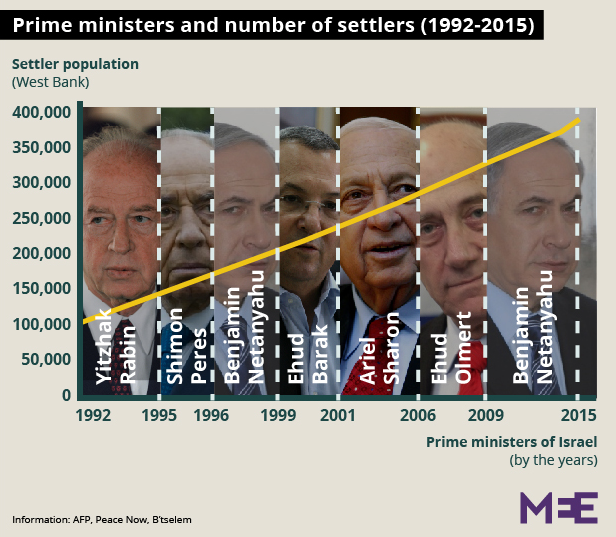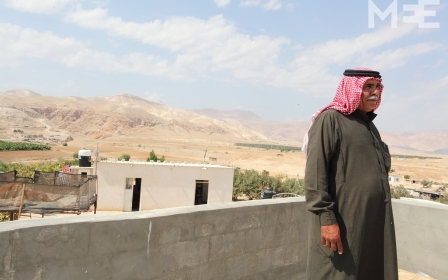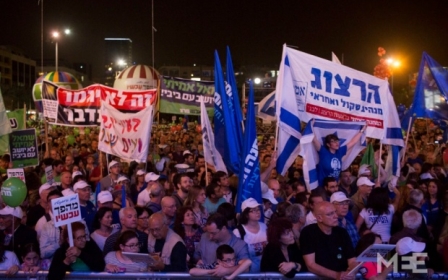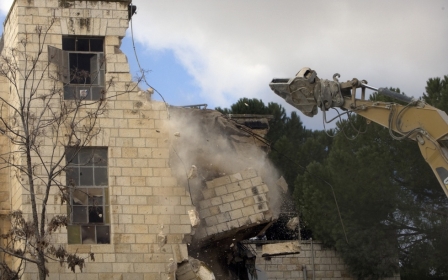Israel's National Park growth hits Palestinian families hard
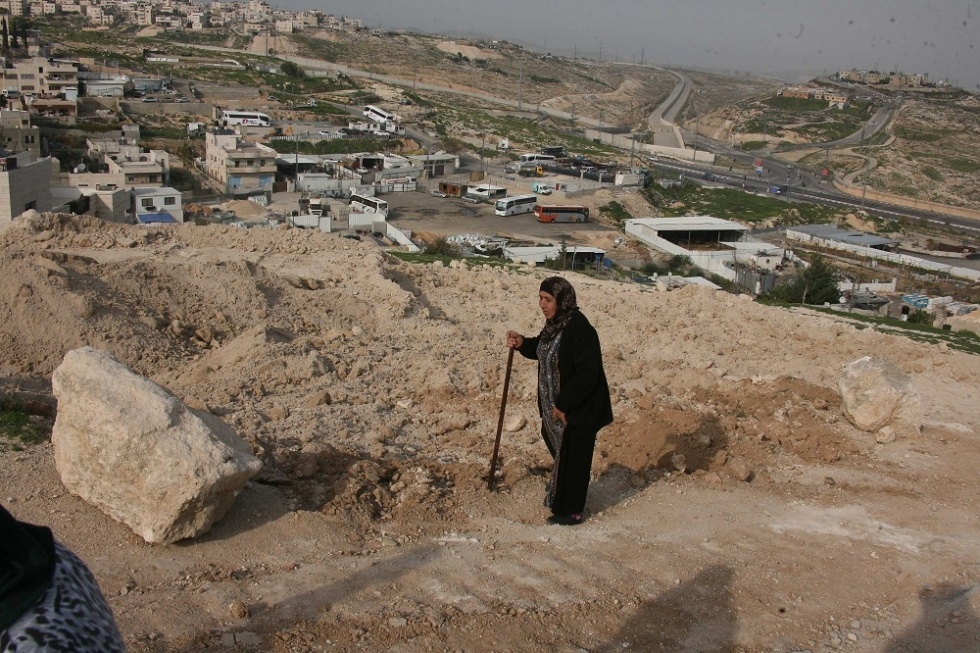
JERUSALEM - Wa’ad Mustafa and Baha’a Turk were not shocked to see bulldozers in front of their home in Issawiya, East Jerusalem.
The boys could do little to stop the vehicles that rolled by from the Israeli base above their neighbourhood on Tuesday, leaving a trail of hard-packed, flattened clay and churned mud. The equipment was escorted, after all, by armed soldiers who fired tear gas at those who tried to stop them: one man, who was in his 80s and already suffering from health problems, was taken to hospital after inhaling the smoke.
“We’re living under occupation, this is life,” Mustafa told Middle East Eye with a dry smile. The 16-year-old has lived for most of his life in a house on the outskirts of Issawiya, one of East Jerusalem’s most troubled neighbourhoods. “It’s like this constantly - all the time they come here and dig the land.”
All Jerusalem neighbourhoods suffer from frequent home demolitions, but Issawiya and neighbouring al-Tur are among the most seriously hit: Turk said he can remember hundreds of buildings being torn down. Most incidents are justified on the grounds that structures have been built illegally, but for Palestinians in East Jerusalem permits to extend or build their homes are notoriously difficult to obtain.
Yesterday, however, the damage was not restricted to homes. Israeli vehicles flattened several walls, storehouses and sheds used for keeping animals, as well as destroying the dirt tracks that local families depend on to reach their homes. Further up the hill, two olive trees were uprooted and pushed across the ridge, and by early afternoon residents of the village were picking through the tracks and assessing the damage. One man, attempting to drive his car down the hill, became immediately stuck in the mess of soil.
When structures are destroyed here, authorities justify them in terms of illegality. But there is good reason why the area between Issawiya and al-Tur might be particularly hit by demolitions. This green hillside sloping southwards from the Hebrew University lies between Jerusalem and the West Bank, and borders the Route One road to Ma’ale Adumim. It’s also set to become Mount Scopus Slopes National Park.
A controversial project of the National Parks Authority, Mount Scopus is currently being proposed in the Jerusalem area. Slated to be built on some 750 dunums of Issawiya and al-Tur land, it will turn an area that Palestinian residents badly need for development of their communities into nationally protected open space.
Today, the lands are used primarily for grazing and agriculture. Significant development has been prevented by the legal dispute over its use, which dates back to 2004. Back then residents of Issawiya and al-Tur began to develop a plan for how they could best utilise the land for the growth of their communities. At the same time, Israel’s National Parks Authority began formulating its own plans for the Mount Scopus National Park in the same area.
The 750 dunums between the Arab neighbourhoods have a few features to recommend them as a conventional nature spot. The area boasts a stunning view from the Hebrew University towards Jordan and is of significant archaeological interest - both of these reasons have been used by supporters to justify the establishment of a national park in the area.
Strategic aims
But critics of the plan argue that the location of the proposed park serves deeper, more strategic, aims than the provision of cycle tracks and tranquil areas.
By designating large areas of land as legally protected open space, they say, Israeli authorities stop Palestinian communities from expanding. Doing so prevents both demographic increases of the city’s Arab population, and maintains Jewish-Israeli contiguity between Jerusalem and the settlements of the West Bank.
These arguments are not just put forward by those who oppose the park - although authorities deny such motives, supporters of the plan are transparent in promoting its political objectives. In its coverage of the park’s approval last year, settler news source Arutz Sheva highlighted that a national park would “prevent expansion” of Issawiya and al-Tur. A 2010 paper from the Jerusalem Centre for Public Affairs also claims that linking the built-up Arab areas in the city might “reinforce the Palestinian demand to recognise the West Bank and eastern Jerusalem as a single contiguous entity”. It urged against such moves being allowed.
The consequences of such thinking, critics have warned, is planning that seeks to limit Palestinian development and which has profound impact for East Jerusalem’s communities.
“Plans are not drawn up with any consideration for the local reality. They’re there to restrict the growth of the population, and reality goes the other way,” Sari Kronish, housing policy and East Jerusalem coordinator at Bimkom, an Israeli planning rights NGO, told Middle East Eye. The result, she explained, is a community that’s cramped and deprived, with poor infrastructure and no room for growth.
“It means people are constantly dealing with demolitions and in fear of demolitions. There’s not a single park in Issawiya, the children have to play on the street,” she said.
According to a 2012 paper by Bimkom, the rationale behind this kind of planning is articulated in the Jerusalem 2000 Master Plan. Outlining Israeli authorities’ vision for the whole city, it’s a document that takes as a “starting point” a demographic objective: that the Jewish population remain a clear majority, specifically 60 percent, in the face of projected Arab population growth.
At present, the 2000 Plan is yet to be officially approved, and it doesn’t include details of the Mount Scopus park plan. But commentators believe the demographic framework is guiding development of East Jerusalem to the detriment of Palestinian residents who are denied space to expand their communities.
“All planning policy in Jerusalem is a derivative of demographic policy,” Kronish told MEE. “In that sense, the planning for national parks in a densely packed urban environment is intended to curtail development.”
In the balance
Today, Bimkom is among several NGOs working with the residents of Issawiya and al-Tur to make a stand against the seizure of the neighbourhoods’ land. Last year, they won a legal appeal against the national park proposals: as a result, the fate of the area now lies in the balance and the National Parks Authority is prohibited from developing the area according to its plans.
What the current status doesn’t prevent, however, is demolitions that are justified, officially, by a lack of planning permission. On paper, the fact that buildings don’t have permits means demolitions like those that happened on Tuesday are regarded as law enforcement, not demolition. But in Issawiya, Kronish said, it’s law enforcement that authorities have appeared “aggressive” in carrying out.
For the Palestinian residents that walked to the outskirts of their village yesterday, legal campaigns offered little comfort.
“It’s cramped in the village, so we came here to get some fresh air, to see a different place,” Rabeeha, an Issawiya local, told MEE as she looked on at the bulldozer trails. Picking their way through the dust and the mud, locals discussed politics with a dull sense of resignation. “But now we’re here, we find that they’ve dug all this up as well.”
“We live in a prison. We’ve got the military base on two sides, settlements on the other, the road here,” Abu Mohammed, Rabeeha’s brother, continued. “And now they’re going to make the park on this side too. We’re surrounded.”
New MEE newsletter: Jerusalem Dispatch
Sign up to get the latest insights and analysis on Israel-Palestine, alongside Turkey Unpacked and other MEE newsletters
Middle East Eye delivers independent and unrivalled coverage and analysis of the Middle East, North Africa and beyond. To learn more about republishing this content and the associated fees, please fill out this form. More about MEE can be found here.


